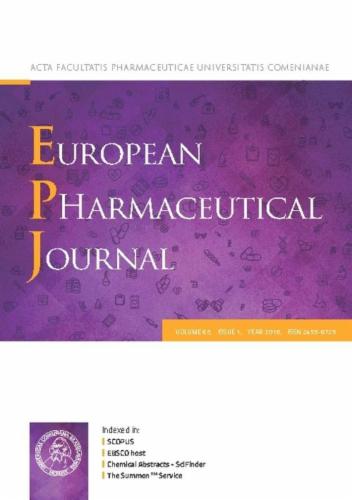Intra-aortic infusion of nicotine can induce a novel mouse model of abdominal aortic aneurysm
IF 4.7
3区 医学
Q1 PHARMACOLOGY & PHARMACY
引用次数: 0
Abstract
Objective
Smoking is one of the most important independent risk factors for abdominal aortic aneurysm (AAA). However, harmful tobacco substances, such as nicotine, are not directly used to induce experimental AAAs in animals to mimic smokers with an AAA status similar to that of humans. To facilitate the study of the relationship between smoking and AAA, this study presents a novel model of nicotine-induced AAA.
Methods
In the present study, Mendelian randomization (MR) analyses were used to validate that smoking and its main harmful substance, nicotine, are independent risk factors for AAA. We then evaluated the intraluminal infusion of four doses of nicotine into mouse abdominal aortas to establish a novel AAA model.
Results
MR analysis revealed that smoking, daily cigarette consumption, and smoking cessation history were positively associated with AAA pathogenesis, and the associations between the nicotine metabolism rate and AAA approached statistical significance. On day 14 after nicotine infusion in the mice, the mean diameter of the abdominal aorta increased from approximately 0.50 mm (baseline) to 0.94 to 1.0 mm in the four groups. Almost all of the mice developed abdominal aortic aneurysms, but aortic dilation did not show a clear dose‒dependent relationship. Compared with the sham and PBS infusion groups, the nicotine infusion group (5 mg/mL dose was selected for subsequent analysis) presented more severe aortic dilation, aortic elastin degradation, medial smooth muscle cell loss and aortic leukocyte accumulation. A more severe inflammatory status also increased aortic matrix metalloproteinase (MMP)2 and MMP9 expression and promoted mural neovessel sprouting. Notably, the lesions in the nicotine infusion group were generally not as severe as those in the PPE infusion group, which served as a positive control. To test whether the effect of nicotine on AAA pathogenesis is dependent on its corresponding receptors, we blocked its main receptor, the α7 subunit nicotinic acetylcholine receptor, with the antagonist methyllycaconitine (MLA). The results showed that the aneurysmal lesions were significantly improved by MLA treatment.
Conclusion
In this study, we established a novel and highly efficient experimental AAA model via direct intraluminal nicotine infusion. We also demonstrated that nicotine-induced AAA formation is partially dependent on the activation of its receptors, thus providing a research tool for studying the management of smoking-induced AAAs.

主动脉内输注尼古丁可诱导小鼠腹腔主动脉瘤模型。
目的:吸烟是腹主动脉瘤(AAA)的重要独立危险因素之一。然而,有害的烟草物质,如尼古丁,并没有直接用于诱导动物的实验性AAA状态,以模仿具有类似于人类AAA状态的吸烟者。方法:本研究采用孟德尔随机化(Mendelian randomization, MR)方法验证吸烟及其主要有害物质尼古丁是诱发AAA的独立危险因素,并通过对小鼠腹主动脉腔内注射4种剂量尼古丁的评价,建立了一种新的AAA模型。结果:MR分析显示吸烟、每日吸烟、戒烟史与AAA发病呈正相关,尼古丁代谢率与AAA的相关性接近统计学意义。在尼古丁输注后的第14天,四组小鼠的腹主动脉平均直径从约0.50 mm(基线)增加到0.94 ~ 1.0 mm。几乎所有的小鼠都出现了腹主动脉瘤,但主动脉扩张没有显示出明确的剂量依赖关系。与假手术组和PBS输注组相比,尼古丁输注组(剂量为5 mg/mL)主动脉扩张、主动脉弹性蛋白降解、内侧平滑肌细胞损失和主动脉白细胞积累更为严重。更严重的炎症状态也增加了主动脉基质金属蛋白酶(MMP)2和MMP9的表达,促进了壁新血管的萌发。值得注意的是,尼古丁输注组的病变普遍没有PPE输注组严重,PPE输注组作为阳性对照。为了验证尼古丁对AAA发病机制的影响是否依赖于其相应的受体,我们用拮抗剂甲基lycaconitine (MLA)阻断其主要受体α7亚基烟碱乙酰胆碱受体。结果显示,MLA治疗后动脉瘤病变明显改善。结论:本研究建立了一种新型、高效的经腔内直接输注尼古丁的实验性AAA模型。我们还证明了尼古丁诱导的AAA的形成部分依赖于其受体的激活,从而为研究吸烟诱导的AAA的管理提供了研究工具。
本文章由计算机程序翻译,如有差异,请以英文原文为准。
求助全文
约1分钟内获得全文
求助全文
来源期刊
CiteScore
9.60
自引率
2.20%
发文量
248
审稿时长
50 days
期刊介绍:
The journal publishes research articles, review articles and scientific commentaries on all aspects of the pharmaceutical sciences with emphasis on conceptual novelty and scientific quality. The Editors welcome articles in this multidisciplinary field, with a focus on topics relevant for drug discovery and development.
More specifically, the Journal publishes reports on medicinal chemistry, pharmacology, drug absorption and metabolism, pharmacokinetics and pharmacodynamics, pharmaceutical and biomedical analysis, drug delivery (including gene delivery), drug targeting, pharmaceutical technology, pharmaceutical biotechnology and clinical drug evaluation. The journal will typically not give priority to manuscripts focusing primarily on organic synthesis, natural products, adaptation of analytical approaches, or discussions pertaining to drug policy making.
Scientific commentaries and review articles are generally by invitation only or by consent of the Editors. Proceedings of scientific meetings may be published as special issues or supplements to the Journal.

 求助内容:
求助内容: 应助结果提醒方式:
应助结果提醒方式:


